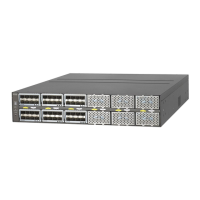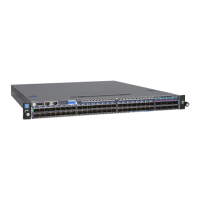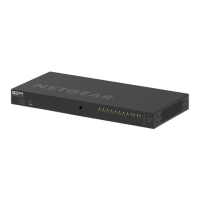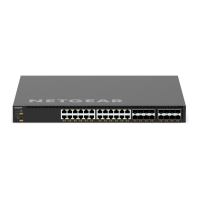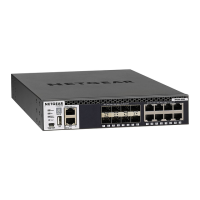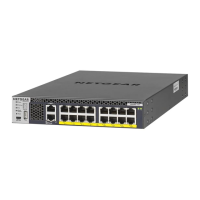Routing
204
M4100 Series Managed Switch
11. Next Hop IP Address displays the outgoing router IP address to use when forwarding traffic
to the next router (if any) in the path toward the destination.
The next router is always one of the adjacent neighbors or the IP address of the local
interface for a directly attached network.
12. Preference displays an integer value from 1 to 255.
You can specify the preference value (sometimes called administrative distance) of an
individual static route.
Among routes to the same destination, the route with the lowest
preference value is the route entered into the forwarding database. By specifying the
preference of a static route, the user controls whether a static route is more or less
preferred than routes from dynamic routing protocols. The preference also controls
whether a static route is more or less preferred than other static routes to the same
destination.
13. Use Description to specify the description of this route.
The description must consist of alphanumeric, hyphen, or underscore characters. It can
be up to 31 characters in length.
14. T
o add a new static route entry to the switch, click the ADD button.
15. T
o delete a static route entry from the switch, click the DELETE button.
Click the REFRESH button to refresh the screen to show the latest learned routes.
The following table describes the nonconfigurable information displayed on the screen.
Table 64. Route Configuration - Learned Routes
Field Description
Network Address The IP route prefix for the destination.
Subnet Mask Also referred to as the subnet/network mask, this indicates the portion
of the IP interface address that identifies the attached network.
Protocol This field tells which protocol created the specified route. The
possibilities are as follows:
• Local
• Static
Route Type This field can be Connected or Static or Dynamic based on the
protocol.
Next Hop Interface The outgoing router interface to use when forwarding traffic to the
destination.
Next Hop IP Address The outgoing router IP address to use when forwarding traffic to the
next router (if any) in the path toward the destination.
The next router is
always one of the adjacent neighbors or the IP address of the local
interface for a directly attached network.
Metric Administrative cost of the path to the destination. If no value is entered,
default is 1.
The range is 0 – 255.
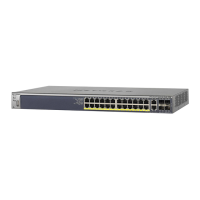
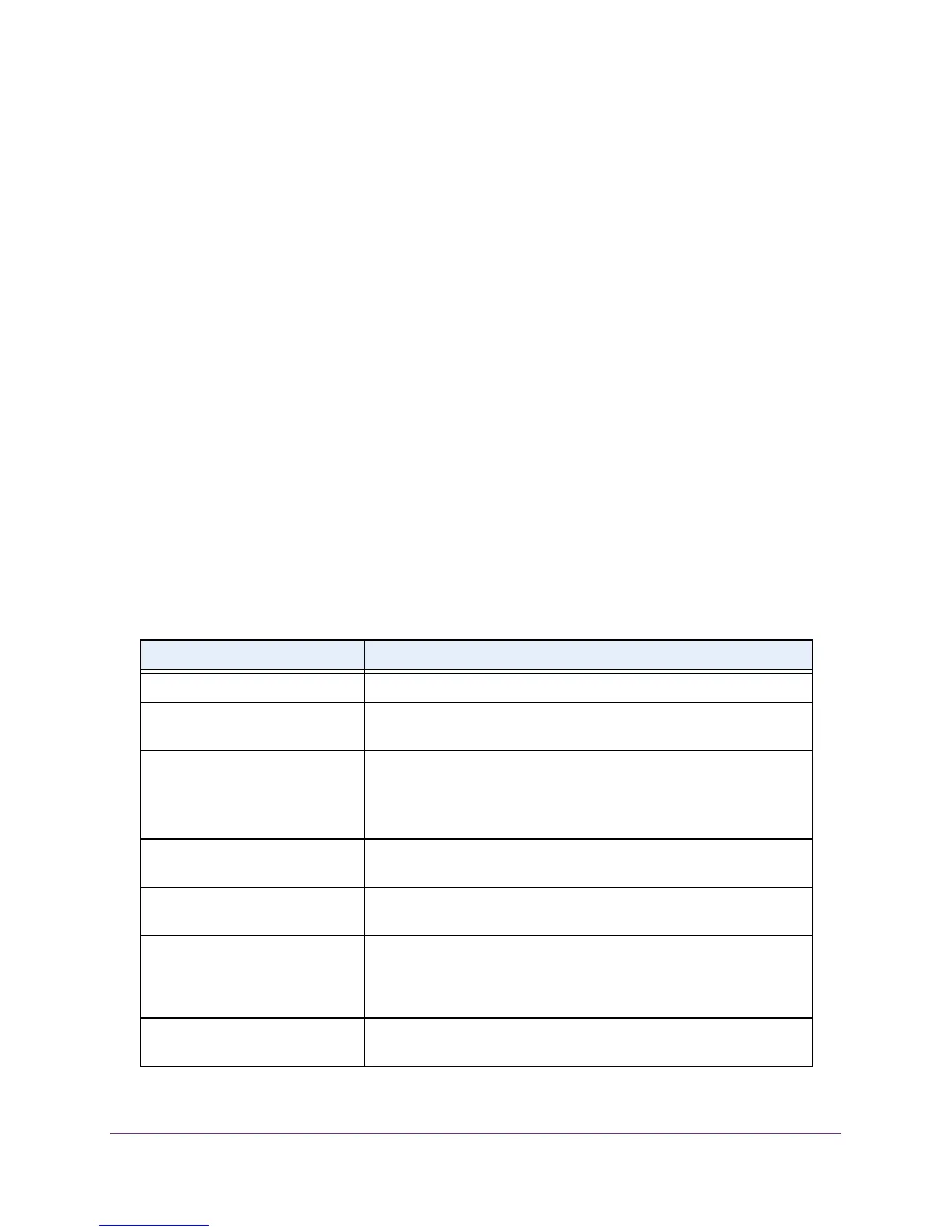